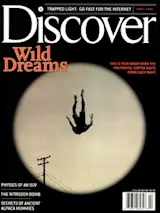Paying the Piper Jaron Lanier's commentary on copying music files from the Internet ["A Love Song for Napster," February] is fundamentally wrongheaded. He holds up the big media companies as villains, but nothing could be further from the truth. Companies and artists have a right to demand payment for their work; denying them that right is stealing. Lanier seems to believe that just because technology makes something possible, it should be legal. That's a slippery slope. The idea that we should throw out several hundred years of copyright protection law because hackers can crack security codes is identical to the notion that we should throw out the concept of private property simply because burglars can break into houses and steal things. The appropriate remedy for illegally copying copyrighted material is to have music and video content covered as software under the 1997 No Electronic Theft Act. A few highly publicized ...
Letters: April 2001
Letters from the April 2001 issue.
More on Discover
Stay Curious
SubscribeTo The Magazine
Save up to 40% off the cover price when you subscribe to Discover magazine.
Subscribe













